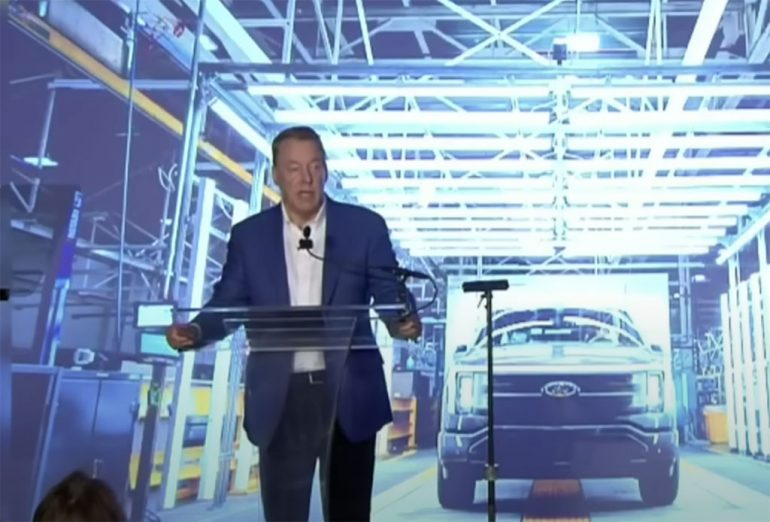
In a high-stakes battle of wills, Bill Ford, the executive chairman of Ford, made a fervent plea on Monday, urging the United Auto Workers (UAW) union to bring an end to a 32-day strike that has sent shockwaves through the automotive industry. The strike, which began as a localized labor dispute, has expanded and now threatens the future of the American automaker and casts a shadow over the broader U.S. economy.
Bill Ford’s impassioned call for an end to the strike took place against the backdrop of the company’s iconic Rouge assembly plant, located near its headquarters in Dearborn, Michigan. With the strike, the situation had escalated to a point where Ford felt compelled to take a public stand. He implored UAW and its members to come to the negotiation table, emphasizing the urgent need to resolve the ongoing labor dispute.
In response to Bill Ford’s appeal, UAW President Shawn Fain delivered a pointed message, warning that the union had the power to cripple Ford’s operations by expanding the strike to the Rouge plant. Fain’s statement highlighted the central issue at the heart of the dispute – the level of wages and benefits for the workforce. He argued that if Ford sought to maintain its identity as an “all-American auto company,” it should offer wages and benefits that reflect that identity.
The strike has had far-reaching consequences, affecting not only Ford but also General Motors (GM) and Stellantis, the parent company of Chrysler. Over 34,000 union members across these automakers are on strike, and Ford has been forced to furlough an additional 2,480 workers due to the disruptions caused by the strike.
The impact of these strikes extends beyond the automakers themselves, rippling through suppliers, dealers, and the broader workforce. An estimate by the Anderson Economic Group placed the combined financial toll at a staggering $7.7 billion as of October 12. The situation has pushed many suppliers into a precarious “danger zone,” according to AEG, exacerbating the crisis within the industry.
One notable aspect of this dispute is how it has garnered the attention of other automakers like Toyota, Honda, and Tesla, who stand to gain from the ongoing strike. Bill Ford pointed out that these companies view the strike as advantageous, as it disrupts their American competitors and potentially drives business in their direction. In contrast, Fain countered by suggesting that UAW members should look to the future and build solidarity across the industry, rather than viewing non-union workers at companies like Tesla as adversaries.
The strike’s most critical battleground is the Kentucky Truck plant, Ford’s largest and most profitable assembly operation worldwide. The shutdown of this facility is not only impacting Ford’s bottom line but also tens of thousands of American workers. If the strike persists, Bill Ford warns that it could have severe repercussions on the American economy at large.
However, resolving the strike remains a contentious and elusive goal. UAW President Fain accused Ford of insufficient offers during the negotiations and called for a substantial increase in compensation, suggesting that Ford’s CEO should open the “big checkbook” used for executive pay and financial dealings. Ford, on the other hand, argued that the automaker had already pushed the limits of what it could offer in terms of higher wages and benefits, emphasizing the potential financial strain these demands could place on the company.
Bill Ford has positioned himself and his family’s company as the most union-friendly in the automotive industry, emphasizing a united front between Ford and the UAW against external competition. Yet, the current situation paints a different picture, with the UAW branding Ford as “the enemy.” Analysts like Harley Shaiken from the University of California Berkeley suggest that Ford’s appeal may be aimed at speaking directly to the workforce and trying to steer the negotiations in a more favorable direction, although the success of this approach remains uncertain.
In this high-stakes standoff, the UAW’s strategy appears to be centered on Ford as the first domino in the line. By securing a favorable deal with Ford, the union may gain leverage to pressure GM and Stellantis to match the terms. The response of GM and Stellantis to these developments remains to be seen, leaving the future of the American automotive industry hanging in the balance.
Source: Reuters

Mike Floyd is a finance executive by trade and a car enthusiast at heart. As a CFO with a keen eye for detail and strategy, Mike brings his analytical mindset to the automotive world, uncovering fresh insights and unique perspectives that go beyond the surface. His passion for cars—especially his favorite, the Porsche 911, fuels his contributions to Automotive Addicts, where he blends a love for performance and design with his professional precision. Whether he’s breaking down industry trends or spotlighting emerging innovations, Mike helps keep the site both sharp and forward-thinking.